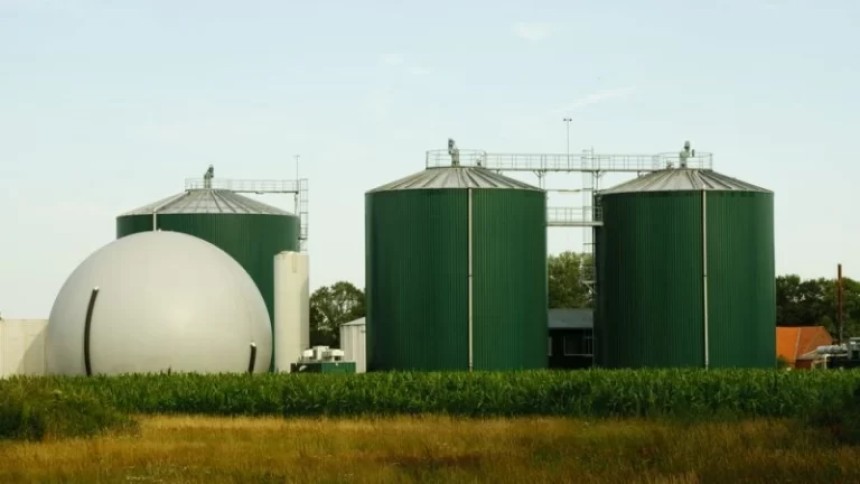Everything You Need to Know About Air Cylinders: Types, Applications, and Maintenance
Air cylinders, also known as pneumatic cylinders, are devices that convert compressed air into linear or rotary motion. They are widely used in a variety of industries, including manufacturing, automotive, aerospace, and robotics, to perform various tasks such as lifting, pushing, pulling, and rotating. In this article, we will discuss everything you need to know about air cylinders, including their types, applications, and maintenance.
Understanding the Different Types of Air Cylinders and Their Applications
Air cylinders come in different types, sizes, and configurations, each designed for specific applications. The most common types of air cylinders are:
- Single-acting cylinders: These cylinders use air pressure to move the piston in one direction and a spring or other external force to return the piston to its original position. They are commonly used in applications where the load is always in one direction, such as lifting a load or pushing it apart.
- Double-acting cylinders: These cylinders use air pressure to move the piston in both directions, allowing for more precise control over the load. They are commonly used in applications where the load needs to be moved in both directions, such as moving a conveyor belt or opening and closing a valve.
- Rotary cylinders: These cylinders convert compressed air into rotary motion, allowing them to rotate a shaft or other mechanism. They are commonly used in applications such as indexing, positioning, and driving a rotary actuator.
When selecting an air cylinder for your application, it is important to consider factors such as the load capacity, stroke length, operating pressure, and mounting configuration. It is also important to ensure that the cylinder is compatible with the operating environment, such as the temperature, humidity, and corrosive agents present.
Factors to Consider When Choosing an Air Cylinder for Your Application
Selecting the right air cylinder for your application can be challenging, as there are many factors to consider. Here are some key factors to keep in mind when choosing an air cylinder:
- Load capacity: The load capacity of the cylinder should be sufficient to handle the weight of the load being moved. It is important to consider both the static and dynamic loads, as well as any shock or vibration that may occur during operation.
- Stroke length: The stroke length of the cylinder should be long enough to move the load through its full range of motion. It is important to ensure that the stroke length is not too long, as this can result in excessive wear on the cylinder and reduced performance.
- Operating pressure: The operating pressure of the cylinder should be within the range specified by the manufacturer. It is important to ensure that the pressure source is sufficient to provide the required pressure and that the pressure is regulated to prevent damage to the cylinder.
- Mounting configuration: The mounting configuration of the cylinder should be compatible with the application. It is important to ensure that the cylinder can be securely mounted and that the mounting hardware is suitable for the load being moved.
- Operating environment: The cylinder should be compatible with the operating environment, including the temperature, humidity, and presence of corrosive agents. It may be necessary to select a cylinder with special coatings or materials to ensure compatibility.
Maintaining Your Air Cylinders for Optimal Performance and Longevity
Proper maintenance is essential to ensure that your air cylinders perform last as long as possible. Here are some tips for maintaining your air cylinders:
- Regular inspection: Regularly inspect your air cylinders for signs of wear, damage, or leaks. Check the cylinder and its components for cracks, dents, or other damage that could compromise its performance. Look for signs of leaks around the seals and fittings, and check the air supply lines for blockages or damage.
- Lubrication: Proper lubrication is essential for the smooth operation of air cylinders. Use the recommended lubricant for your cylinder and apply it according to the manufacturer's instructions. Avoid over-lubricating, as this can attract dirt and debris that can damage the cylinder.
- Cleanliness: Keep your air cylinders clean and free of dirt and debris. Use a clean cloth or air gun to remove any dirt or debris that may have accumulated on the cylinder or its components. Avoid using solvents or harsh chemicals that could damage the cylinder.
- Proper storage: When storing air cylinders, make sure they are clean and dry. Keep them away from heat sources and direct sunshine in a dry, cold location. Do not stack or pile cylinders, and avoid dropping or bumping them.
- Replacement of worn parts: Over time, the seals, pistons, and other components of your air cylinders may wear out and need to be replaced. Replace worn or damaged parts as soon as possible to prevent further damage to the cylinder and ensure optimal performance.
Troubleshooting Common Issues with Air Cylinders
Even with proper maintenance, air cylinders can sometimes develop problems. Here are some common issues that may arise, along with their potential causes and solutions:
- Slow or uneven movement: This may be caused by a lack of lubrication, dirty or worn components, or insufficient air pressure. Check the lubrication and cleanliness of the cylinder, and ensure that the air pressure is within the recommended range.
- Leaks: Leaks can be caused by damaged seals, fittings, or air supply lines. Inspect the cylinder and its components for signs of leaks, and replace any damaged parts.
- Excessive noise or vibration: This may be caused by loose fittings, damaged components, or insufficient air pressure. Check the fittings and components for damage or wear, and ensure that the air pressure is within the recommended range.
- Cylinder won't move: This may be caused by a lack of air pressure, blocked air supply lines, or damaged components. Check the air pressure and supply lines, and inspect the cylinder and its components for damage or wear.
In conclusion, air cylinders are versatile and essential devices used in a variety of industries. By understanding the different types of air cylinders, considering factors when choosing an air cylinder for your application, maintaining your air cylinders properly, and troubleshooting common issues, you can ensure that your air cylinders perform optimally and last as long as possible.
Need help in growing your business? If you care for your business and want to see it at the top like them, you can contact Grow Media Digital. Grow Media Digital is a one-stop solution for every digital need. For More Details, Visit Our Official Website: https://www.growmedia.digital/

Web Development vs. Web Design: What's the Difference?
In this blog post, we'll explore the differences between web development and web design, s...



